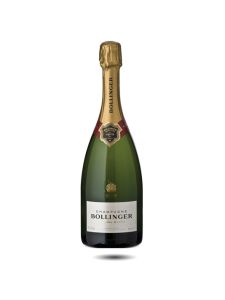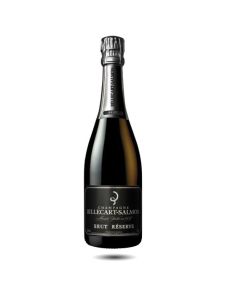We use cookies to make your experience better. To comply with the new e-Privacy directive, we need to ask for your consent to set the cookies. Learn more.
Royal Belgian Caviar
Although our website is very international, we are very proud to be Belgian and it is always wonderful when we can promote great Belgian products.
I first tasted Royal Belgian Caviar at Hof van Cleve and was impressed by the authentic taste, not too salty or oily – just the right pitch between a creamy texture, a saline, iodine flavour and beautiful richness. Since its founding over ten years ago, the company has grown and has achieved great success not only in Belgium but abroad. Recently I paid a visit to their sturgeon farm on the border between Belgium and France since I wanted to learn more about the farming and fabrication of this precious food which adds such a delicious touch to our end of year festivities.
The first misunderstanding to get over is that Royal Belgian Caviar (RBC) is made from Belgian fish. Sadly, it has been a long time since Belgian sturgeon have been found in the Schelde or the Meuse rivers but maybe with time, they can be reintroduced, thanks to the breeding efforts of RBC. The caviars are made from different species of sturgeon that come either from Siberia or from the Caspian Sea. To stop in-breeding RBC is developing hybrid species by crossing Siberian and Caspian fish. Only Beluga caviar comes from a specific type of sturgeon. Since wild sturgeon is now an endangered species and fishing them illegal, the breeding efforts that RBC goes through may well save the fish. It took ten years work for RBC to breed the fish that they needed to produce caviar which takes its name from the word “Khavyar” which means “eggs” in Turkish.
RBC raise their fish from A to Z, inseminating the female fish with fertilized eggs and allowing the sturgeon to grow until they reach from 8 to 18 years of age for the largest Beluga varieties. The fish farm consists of various different fresh water pools where batches of the same eggs are hatched and raised together until their precious eggs are ready to be harvested. The final stage in their life cycle is the purging phase where the fish are placed in 100% clean water for six weeks to obtain the purest eggs. The quality of these eggs will depend largely on the type of food that the fish receive during their lives so it is not surprising that RBC was created by a company, AquaBio known for the quality of their fish feeds and especially for their flour paste. A great deal of research takes place to finely adjust the food to produce the best tasting caviar.
Once the female fishes’ eggs are ready to be harvested, they are checked by ultrasound to check the quality of the eggs. From harvesting, when the eggs are removed from the fish’s stomach to rinsing, sieving, measuring and salting and packing the caviar, the whole process can be done in 15 minutes. This is very important as oxygen is the enemy of fresh caviar and RBC want their product to be as fresh as possible. Packed in vacuum tins the caviar should be consumed as soon as the tin is open. It is important when buying your caviar, that you bring a freezer bag so that you can keep your caviar cool until can transfer it to your fridge.
Deciding which Caviar to choose is a matter of taste and the Royal Belgian Caviar website will give you tasting notes for each of the five types of caviar that they offer (out of the 27 different varieties that can exist). Our favourites are the Platinum made from a RBC hybrid of Russian and Siberian sturgeon which are at least 8 years old, the rather nutty, mineral flavour of the Osietra caviar from Russian caviar and for those really special occasions, the king of caviar, Beluga, made from Beluga sturgeon which are at least 18 years old.
Our favourite way to enjoy caviar is very purely, since the dishes you never forget are always the simplest ones. Serve either on small pearl or wooden spoons or with blini with a touch of sour cream on chilled dishes. Accompany with a great Champagne such as Bollinger or Billecart Salmon and have a delicious, gourmet, New Year.
-
0.75l
 €63.00 €52.07Bollinger's flagship cuvee is a blend of 60% Pinot Noir, 25% Chardonnay and 15% Pinot Meunier. Aged in bottle on its fine lees for a minimum of three years prior to disgorgement, this Champagne has a magnificent aromatic intensity of brioche, pears and apple puree. It is a pure expression of the house style with its creamy, velvetly texture, dry and fairly austere finish and fine complexity and richness. A real classic to be drunk five years after purchase.
€63.00 €52.07Bollinger's flagship cuvee is a blend of 60% Pinot Noir, 25% Chardonnay and 15% Pinot Meunier. Aged in bottle on its fine lees for a minimum of three years prior to disgorgement, this Champagne has a magnificent aromatic intensity of brioche, pears and apple puree. It is a pure expression of the house style with its creamy, velvetly texture, dry and fairly austere finish and fine complexity and richness. A real classic to be drunk five years after purchase.
-
0.75l
 €50.00 €41.32Pale yellow colour with delicate rose tints, the nose is complex and austere with red fruits, spicy bready notes and plum fruits. Delicate, balanced and persistent.
€50.00 €41.32Pale yellow colour with delicate rose tints, the nose is complex and austere with red fruits, spicy bready notes and plum fruits. Delicate, balanced and persistent.




